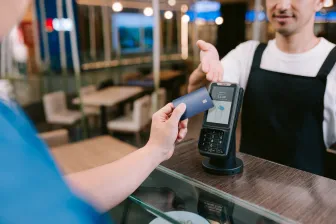With the ubiquity of digital devices and the global push towards cashless economies, it's no surprise that digital payments are on the rise. This trend is the same in Japan, the 10th most populous country in the world, with a population of 126 million people. Its high-tech, highly connected society is quick to adopt new technologies, increasing the number of businesses and individuals embracing digital payment options.
Japan's government has been pushing towards a cashless society in recent years to improve the efficiency and convenience of financial transactions and reduce the costs associated with handling cash. But cashless payments in Japan only rose from 13.2% in 2010 to 32.25% in 2021. This is slow compared to other Asian countries like South Korea at 93.6%, China at 83%, and Singapore at 60.4% in 2020.
The reason is that going cashless is not a preference for the Japanese. In a country with a low crime rate, cash is a reliable form of payment, especially for the older generation, and is treated with great respect. In fact, most Japanese prefer cash and see it as an easy and secure way to make transactions compared to digital payments, where personal data leakage is a primary fear.
But the Japanese government has been taking a proactive approach and working to create a supportive environment for the growth of cashless payments in the country by establishing a "Cashless Vision" to increase cashless transactions to 40% by 2025 and 80% in the future. They also introduced a reward system which increased cashless payments adoption in 2019. The pandemic also boosted non-cash payments as consumers avoid contact during transactions.
As a result, there is a visible decrease in cash at the point of sale. The credit card, the most widely used mode of cashless payments in Japan, is also declining. It is now giving way to QR codes payment which can be linked to credit cards, bank accounts, or pre-paid as a payment method is gaining traction in the cashless payment space in Japan.
All these factors, consumer behaviors, and expectations push cashless payments forward. But they also increase the complexity of Japan's payment ecosystem.
Consumer culture in Japan
Japan has a unique culture, and consumer habits have been shaped by cultural and economic factors. Some of the characteristics of Japanese consumer habits include:
- Advanced technology adoption:
Japanese consumers are highly technologically advanced and are among the first adopters of new technologies. This is reflected in their shopping habits, where online shopping, mobile payments, and smart devices play a significant role.
- Convenience:
Japanese consumers place a high value on convenience and are willing to pay for products and services that offer convenience and efficiency. Vending machines are so popular in Japan that it is home to one of the world's largest and most advanced vending machine industries.
- Focus on quality and experience:
Japanese consumers enjoy good quality products and services. In addition, they enjoy visiting stores, trying out products before making a purchase, and placing a high value on the shopping experience, including payment.
With these high expectations, Japanese merchants and businesses must match their payment capabilities and meet their customers' needs to remain relevant.
- A fast-emerging cashless society:
The use of electronic and digital payment methods, such as credit and debit cards, e-wallets, and smart cards, such as Suica and Pasmo, is widespread, particularly among younger consumers and in large cities. They offer a convenient and efficient way for consumers to make payments without needing cash or a credit card. They are also highly secure and allow users to keep track of their spending. Japan's transportation companies developed Suica and Pasmo smart cards, which can be used for transportation, vending machines, and in-store purchases.
In recent years, there has been a significant increase in the use of e-wallet services, such as Line Pay and Rakuten Pay, which allow consumers to make payments directly from their smartphones. Line, a superpower messaging application, launched its service, Line Pay, in 2014 and has since become one of Japan's most popular e-wallet options. Rakuten's e-wallet service, Rakuten Pay, allows users to pay with their smartphones at Rakuten's e-commerce store and other merchants that accept Rakuten Pay.
However, the largest mobile payment app in Japan is PayPay, a joint venture between Softbank Group and Yahoo Japan in 2018 with 38 million users on its platform. The company developed a QR code and barcode-based payment service, which they collaborated with Paytm, an India-based payment service company. Users link their bank account to their PayPay account. Payment at the point of sale is done by scanning a QR code or salesclerk scan a bar code on their smartphone. In April 2022, Line Pay merged with PayPay, giving the latter access to over 80 million additional Japanese users already on Line's messaging service.
There are several other mobile payment providers in Japan, including NTT Docomo, the largest mobile carrier in the country, which offers a mobile payment service called d Payment.
This trend is expected to continue as emerging payment methods rise and new players enter the market, as seen in other parts of the world.
Android Smart POS is the future of seamless transactions
For merchants to meet the Japanese consumers' expectations for a seamless experience, the in-store point of sale will have to be future-ready to accept various payment methods.
Android Smart POS offers many advantages over traditional payment terminals, including greater flexibility, user-friendliness, and faster transaction times. It also provides access to accept a wide range of payment types, including NFC, QR codes, digital wallets, and apps that can be customized and designed specifically for the merchant, making them the perfect solution for businesses of all sizes. As a result, Android Smart POS is expected to continue gaining market share in the coming years. Companies that adopt Android Smart POS will be well-positioned to take advantage of this new era.
Android AXIUM DX8000
Ingenico is bringing our Android AXIUM DX8000 Smart POS into Japan to help merchants navigate this rapidly changing payment landscape. Harnessing the power of Android 10, the DX8000 offers a best-in-class digital experience in-store while optimizing performance, productivity, and security. The DX8000 is equipped with EMV Chip & PIN, contactless, magstripe, digital wallets, and a QR-code scanner to accept various payment methods. Furthermore, mobility is easy with connectivity to data, bluetooth, and a long-lasting battery, especially in industries like restaurants, entertainment, and retail. We also have a dedicated global team to implement any business application on the AXIUM platform or develop a new payment application for businesses.
The AXIUM range is the foundation for our suite of payment and commerce solutions that Ingenico offers. It sets the path for advanced terminal management and orchestration of payments and commerce services for a holistic commerce solution.
Payment innovation
At Ingenico, innovation is at the heart of everything we do, and our mission is to make payments possible for everyone everywhere.
As the world evolves into a complex payment ecosystem, convenience means nothing without security, especially when it involves data and money. The fact that Japanese consumers love convenience and highly concerned over personal data leakage seems paradoxical. But Ingenico's recent partnership with Fujitsu Frontech North America proved otherwise.
Palm-Vein authentication
The partnership unveiled the world's most secure, accurate and seamless biometric payment solution based on palm vein identification. This innovation enables merchants to speed up check-out, minimize fraud risks and streamline the customer experience.
Every person has a unique pattern of veins in the palm of their hand, palm vein identification is one of the world's most accurate biometric identification technologies. It is less intrusive and more secure than alternatives such as fingerprints and facial recognition. In addition, it is easier to implement and operate, which fits perfectly into the Japanese consumer culture.
Payments Platform as a Service
Innovation is vital in the payment and commerce space. Asia has been described as a fragmented payments landscape with a strong push for cashless transactions, a preference for local payment methods, and hundreds of e-wallet licenses issued within the region. Although it's making significant progress, this has led to multiple terminals in-store, as these payment methods are unable to communicate with each other.
Ingenico's cloud solution PPaaS (Payments Platform as a Service) addresses that issue by managing payments, commerce, and device management services in one platform. As a result, it enables our clients to deliver advanced payment and commerce services to their merchants quickly, economically, and efficiently.
Ingenico’s mission is to make innovative payments and commerce solutions possible for our clients and partners worldwide.
For more information on Ingenico Japan products and solutions offerings, don't hesitate to get in touch with the Ingenico Japan team: [email protected]










